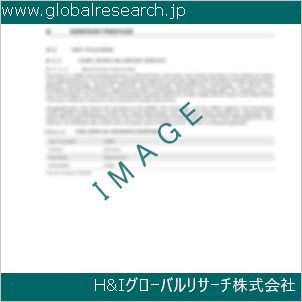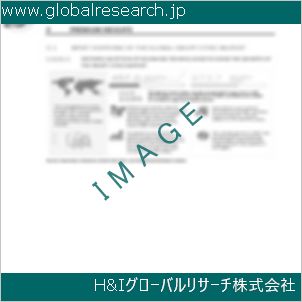Table of Contents
1 Industry Overview of Soya Lecithin
1.1 Definition and Specifications of Soya Lecithin
1.1.1 Definition of Soya Lecithin
1.1.2 Specifications of Soya Lecithin
1.2 Classification of Soya Lecithin
1.3 Applications of Soya Lecithin
1.3.1 Nuclear Application
1.3.2 Non-Nuclear Application
1.4 Industry Chain Structure of Soya Lecithin
1.5 Industry Overview and Major Regions Status of Soya Lecithin
1.5.1 Industry Overview of Soya Lecithin
1.5.2 Global Major Regions Status of Soya Lecithin
1.6 Industry Policy Analysis of Soya Lecithin
1.7 Industry News Analysis of Soya Lecithin
2 Manufacturing Cost Structure Analysis of Soya Lecithin
2.1 Raw Material Suppliers and Price Analysis of Soya Lecithin
2.2 Equipment Suppliers and Price Analysis of Soya Lecithin
2.3 Labor Cost Analysis of Soya Lecithin
2.4 Other Costs Analysis of Soya Lecithin
2.5 Manufacturing Cost Structure Analysis of Soya Lecithin
2.6 Manufacturing Process Analysis of Soya Lecithin
3 Technical Data and Manufacturing Plants Analysis of Soya Lecithin
3.1 Capacity and Commercial Production Date of Global Soya Lecithin Major Manufacturers in 2023
3.2 Manufacturing Plants Distribution of Global Soya Lecithin Major Manufacturers in 2023
3.3 R&D Status and Technology Source of Global Soya Lecithin Major Manufacturers in 2023
3.4 Raw Materials Sources Analysis of Global Soya Lecithin Major Manufacturers in 2023
4 Capacity, Production and Revenue Analysis of Soya Lecithin by Regions, Types and Manufacturers
4.1 Global Capacity, Production and Revenue of Soya Lecithin by Regions 2019-2024
4.2 Global and Major Regions Capacity, Production, Revenue and Growth Rate of Soya Lecithin 2019-2024
4.3 Global Capacity, Production and Revenue of Soya Lecithin by Types 2019-2024
4.4 Global Capacity, Production and Revenue of Soya Lecithin by Manufacturers 2019-2024
5 Price, Cost, Gross and Gross Margin Analysis of Soya Lecithin by Regions, Types and Manufacturers
5.1 Price, Cost, Gross and Gross Margin Analysis of Soya Lecithin by Regions 2019-2024
5.2 Price, Cost, Gross and Gross Margin Analysis of Soya Lecithin by Types 2019-2024
5.3 Price, Cost, Gross and Gross Margin Analysis of Soya Lecithin by Manufacturers 2019-2024
6 Consumption Volume, Consumption Value and Sale Price Analysis of Soya Lecithin by Regions, Types and Applications
6.1 Global Consumption Volume and Consumption Value of Soya Lecithin by Regions 2019-2024
6.2 Global and Major Regions Consumption Volume, Consumption Value and Growth Rate of Soya Lecithin 2019-2024
6.3 Global Consumption Volume and Consumption Value of Soya Lecithin by Types 2019-2024
6.4 Global Consumption Volume and Consumption Value of Soya Lecithin by Applications 2019-2024
6.5 Sale Price of Soya Lecithin by Regions 2019-2024
6.6 Sale Price of Soya Lecithin by Types 2019-2024
6.7 Sale Price of Soya Lecithin by Applications 2019-2024
6.8 Market Share Analysis of Soya Lecithin by Different Sale Price Levels
7 Supply, Import, Export and Consumption Analysis of Soya Lecithin
7.1 Supply, Consumption and Gap of Soya Lecithin 2019-2024
7.2 Global Capacity, Production, Price, Cost, Revenue, Supply, Import, Export and Consumption of Soya Lecithin 2019-2024
7.3 USA Capacity, Production, Price, Cost, Revenue, Supply, Import, Export and Consumption of Soya Lecithin 2019-2024
7.4 EU Capacity, Production, Price, Cost, Revenue, Supply, Import, Export and Consumption of Soya Lecithin 2019-2024
7.5 China Capacity, Production, Price, Cost, Revenue, Supply, Import, Export and Consumption of Soya Lecithin 2019-2024
7.6 Japan Capacity, Production, Price, Cost, Revenue, Supply, Import, Export and Consumption of Soya Lecithin 2019-2024
8 Major Manufacturers Analysis of Soya Lecithin
8.1 Manufacturer One
8.1.1 Company Profile
8.1.2 Product Picture and Specifications
8.1.2.1 Type I
8.1.2.2 Type II
8.1.2.3 Type III
8.1.3 Capacity, Production, Price, Cost, Gross and Revenue
8.1.4 Contact Information
8.2 Manufacturer Two
8.2.1 Company Profile
8.2.2 Product Picture and Specifications
8.2.2.1 Type I
8.2.2.2 Type II
8.2.2.3 Type III
8.2.3 Capacity, Production, Price, Cost, Gross and Revenue
8.2.4 Contact Information
8.3 Manufacturer Three
8.3.1 Company Profile
8.3.2 Product Picture and Specifications
8.3.2.1 Type I
8.3.2.2 Type II
8.3.2.3 Type III
8.3.3 Capacity, Production, Price, Cost, Gross and Revenue
8.3.4 Contact Information
8.4 Manufacturer Four
8.4.1 Company Profile
8.4.2 Product Picture and Specifications
8.4.2.1 Type I
8.4.2.2 Type II
8.4.2.3 Type III
8.4.3 Capacity, Production, Price, Cost, Gross and Revenue
8.4.4 Contact Information
8.5 Manufacturer Five
8.5.1 Company Profile
8.5.2 Product Picture and Specifications
8.5.2.1 Type I
8.5.2.2 Type II
8.5.2.3 Type III
8.5.3 Capacity, Production, Price, Cost, Gross and Revenue
8.5.4 Contact Information
…
9 Marketing Trader or Distributor Analysis of Soya Lecithin
9.1 Marketing Channels Status of Soya Lecithin
9.2 Traders or Distributors with Contact Information of Soya Lecithin by Regions
9.3 Ex-work Price, Channel Price and End Buyer Price Analysis of Soya Lecithin
9.4 Regional Import, Export and Trade Analysis of Soya Lecithin
10 Industry Chain Analysis of Soya Lecithin
10.1 Upstream Major Raw Materials Suppliers Analysis of Soya Lecithin
10.1.1 Major Raw Materials Suppliers with Contact Information Analysis of Soya Lecithin
10.1.2 Major Raw Materials Suppliers with Supply Volume Analysis of Soya Lecithin by Regions
10.2 Upstream Major Equipment Suppliers Analysis of Soya Lecithin
10.2.1 Major Equipment Suppliers with Contact Information Analysis of Soya Lecithin
10.2.2 Major Equipment Suppliers with Product Pictures Analysis of Soya Lecithin by Regions
10.3 Downstream Major Consumers Analysis of Soya Lecithin
10.3.1 Major Consumers with Contact Information Analysis of Soya Lecithin
10.3.2 Major Consumers with Consumption Volume Analysis of Soya Lecithin by Regions
10.4 Supply Chain Relationship Analysis of Soya Lecithin
11 Development Trend of Analysis of Soya Lecithin
11.1 Capacity, Production and Revenue Forecast of Soya Lecithin by Regions and Types
11.1.1 Global Capacity, Production and Revenue of Soya Lecithin by Regions 2024-2029
11.1.2 Global and Major Regions Capacity, Production, Revenue and Growth Rate of Soya Lecithin 2024-2029
11.1.3 Global Capacity, Production and Revenue of Soya Lecithin by Types 2024-2029
11.2 Consumption Volume and Consumption Value Forecast of Soya Lecithin by Regions, Types and Applications
11.2.1 Global Consumption Volume and Consumption Value of Soya Lecithin by Regions 2024-2029
11.2.2 Global and Major Regions Consumption Volume, Consumption Value and Growth Rate of Soya Lecithin 2024-2029
11.2.3 Global Consumption Volume and Consumption Value of Soya Lecithin by Types 2024-2029
11.2.4 Global Consumption Volume and Consumption Value of Soya Lecithin by Applications 2024-2029
11.3 Supply, Import, Export and Consumption Forecast of Soya Lecithin
11.3.1 Supply, Consumption and Gap of Soya Lecithin 2024-2029
11.3.2 Global Capacity, Production, Price, Cost, Revenue, Supply, Import, Export and Consumption of Soya Lecithin 2024-2029
11.3.3 USA Capacity, Production, Price, Cost, Revenue, Supply, Import, Export and Consumption of Soya Lecithin 2024-2029
11.3.4 EU Capacity, Production, Price, Cost, Revenue, Supply, Import, Export and Consumption of Soya Lecithin 2024-2029
11.3.5 China Capacity, Production, Price, Cost, Revenue, Supply, Import, Export and Consumption of Soya Lecithin 2024-2029
11.3.6 Japan Capacity, Production, Price, Cost, Revenue, Supply, Import, Export and Consumption of Soya Lecithin 2024-2029
12 New Project Investment Feasibility Analysis of Soya Lecithin
12.1 New Project SWOT Analysis of Soya Lecithin
12.2 New Project Investment Feasibility Analysis of Soya Lecithin
13 Conclusion of the Global Soya Lecithin (CAS 8002-43-5) Industry 2024 Market Research Report
| ※参考情報 大豆レシチン(Soya Lecithin)は、主に大豆から抽出される脂質の一種で、食品や化粧品、医薬品などさまざまな分野で幅広く使用されています。CAS番号は8002-43-5であり、レシチンは主にホスファチジルコリンを含むリン脂質の一群を指します。この物質は、体内で細胞膜の構成成分として重要な役割を果たすだけでなく、 emulsion(エマルション)を作成する能力から、食品産業においても重要な添加物とされています。 大豆レシチンの特徴としては、良好な乳化性、湿潤性、そして安定性があります。これにより、油脂と水を均一に混ぜることができるため、多くの製品において、安定した製品の提供が可能になります。さらに、大豆レシチンは天然由来の成分であるため、合成添加物に対する消費者の関心が高まる中、選ばれやすいという利点もあります。 種類について、大豆レシチンは大きく分けて liquid lecithin(液体レシチン)と granulated lecithin(顆粒レシチン)の2種類があります。液体レシチンは、特に食品製造において頻繁に使用され、ドレッシングやクリーム、チョコレートなどに添加されることがあります。一方、顆粒レシチンは、粉末状で保存が効きやすく、さまざまな用途に適用されます。また、これらのレシチンは、加工方法や製品に応じて異なる品質が求められ、その特性も変わります。 用途に関して、大豆レシチンは非常に多岐にわたります。食品業界では、乳化剤としての役割が特に重要であり、マヨネーズやソース、バター代替品などに使われています。また、チョコレート製造においては、口溶けを良くし、結晶の安定性を向上させるための成分として重宝されています。さらに、製パン業界では生地のまとまりを助け、製品の品質を保つために活用されています。 また、食品以外にも化粧品業界において、乳化剤や保湿成分として利用されており、クリームや美容液に使われています。さらに、医薬品の製造においても、安定剤や乳化剤として機能し、製品の品質向上に寄与しています。近年では、サプリメントや栄養補助食品の成分としても注目を集めています。 関連技術には、レシチンの抽出や精製のプロセスが挙げられます。通常、大豆レシチンは大豆油の製造過程で副産物として得られます。大豆を圧搾して油を取り出した後、残された粕を水や有機溶剤で処理することで、レシチンが抽出されます。この過程では、物理的な方法や化学的な手法が用いられ、最終的に濃縮されたレシチンが得られます。 レシチンの市場においては、健康志向の高まりや「クリーンラベル」のトレンドにより、天然成分への需要が増加しています。このため、大豆レシチンの需要も高まっており、さまざまな製品において代替品を模索する動きがあります。 大豆レシチンの利用には、いくつかの注意点も存在します。一部の人々は、大豆に対してアレルギー反応を示すことがあるため、アレルギーを持つ消費者にとってはリスクとなり得ます。また、遺伝子組換え(GMO)に関連する懸念もあり、大豆レシチンを使用する製品がGMO品種から作られているかどうかを確認したい消費者も多いです。 最後に、大豆レシチンは、環境への配慮の観点からも重要な役割を果たしています。天然素材であるため、合成化学物質に対する代替品として評価されており、環境に優しい製品づくりが進められています。そのため、持続可能な原料を使用した製品開発が求められる中で、大豆レシチンの利用は今後ますます重要になってくるでしょう。 以上のように、大豆レシチンはその特性から非常に多様な用途を持ち、食品、化粧品、医薬品など多くの分野で利用されています。今後も、健康志向や環境問題に呼応した動きが進められ、大豆レシチンの需給がさらに拡大していくことが予想されます。 |
❖ 免責事項 ❖
http://www.globalresearch.jp/disclaimer












